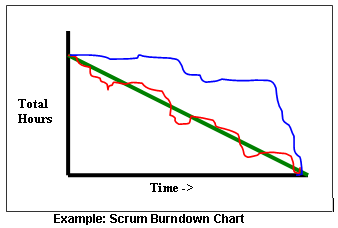Build Trust; High Five Your Teammate
 When I began writing this blog series at BA Times last year, I aimed to focus on the behavioral characteristics of our role as business analysts. My goal was to go deeper than the science of our role and focus on the softer skills. I wanted to give you my thoughts and concrete ways to separate yourself from the pack of BAs by giving you ideas to up your game as a BA. After 10 months and 20 blog posts I have discovered the one thing, above all else, that is the pillar to your success as a business analyst That one thing is trust. The higher the trust relationships you have, the more success you can achieve.
When I began writing this blog series at BA Times last year, I aimed to focus on the behavioral characteristics of our role as business analysts. My goal was to go deeper than the science of our role and focus on the softer skills. I wanted to give you my thoughts and concrete ways to separate yourself from the pack of BAs by giving you ideas to up your game as a BA. After 10 months and 20 blog posts I have discovered the one thing, above all else, that is the pillar to your success as a business analyst That one thing is trust. The higher the trust relationships you have, the more success you can achieve.
When It Hit Me
Last week I delivered a webinar, The BA Life Beyond, Charts, Diagrams, & Documents. The purpose of my webinar was to help the attendees understand the importance of the “soft” skills and behaviors needed to be an excellent, desired BA. As I was working on the content with a colleague we both read Stephen M. R. Covey’s book Speed of Trust. Quickly, trust stood out as the pillar that supports the underlying competencies outlined in the IIBA BABOK® Guide V2.0, the “soft” skills. If you have trusting relationships, communication is more efficient and easier, your ability to lead and influence increases, your teamwork improves dramatically, and the list goes on.
Why Trust?
In his book Covey asks a few simple questions that help you understand why trust is so important. Take a minute to think about these as I lay them out here. For the purposes of this blog think of a work relationship, although this can be applied to any relationship.
Think about a person with whom you have a high trust relationship. Describe this relationship? What’s it like? How does it feel? How is the communication? How well do you communicate? How quickly can you get things done? How much do you enjoy this relationship?
Now think of a person with whom you have a low trust relationship. Describe this relationship? What’s it like? How does it feel? How is the communication? Does it flow freely…or do you feel like you’re constantly walking on land mines and being misunderstood? Do you work together to get things done quickly or does it take a disproportionate amount of time and energy to finally reach an agreement and execution? Do you enjoy this relationship or do you find it tedious, cumbersome, and draining?
You can see that in high trust relationships you move faster, communication is clearer, and a team with high trust will be able to solve problems and make decisions more efficiently.
Build Trusting Relationships
Covey provides 13 behaviors of high trust people and leaders worldwide. One I want to talk about today is “Show Loyalty”. He talks about showing loyalty in terms of giving credit freely. Acknowledging the accomplishments of others, shows you the value that person brings. People want to be on your team if you give credit where credit is due and not take the credit for the work of others.
Here is where the high five comes in. In the March 15, 2010 Sports Illustrated there is a fabulous article written by Chris Ballard about the high five and all of its variations. He shared findings from a study that examined the effect of “touch” (high fives, head slaps, shoulder bumps, etc.) in the NBA. What they found was that the more high fives, head slaps and shoulder bumps, the more wins the team had. The opposite was also true. The teams with the least amount won the least amount of games. And the individuals that high fived the most were the team leaders.
What is a better way to give credit to someone than a high five? When a teammate facilitates a great elicitation session, feel free to walk up to them and deliver a high five as you are leaving the conference room. As you are working on designing a solution and a teammate has a great idea, reach across the table and offer up a fist bump.
I know some of you are thinking I am crazy. Maybe you’re right. People may be a little thrown off if you jump in the air in hopes to connect with a flying shoulder bump or put out your forearm going for a forearm bash. But, you get my point! Right? When others do a good job make sure you acknowledge it.
High fives for everyone,
Kupe




 Last week I had lunch with a former co-worker to discuss an improvement plan she was implementing for a team of business analysts. I told her I would not reveal her name in this blog so let’s call her Wonder BA. Wonder BA is an active reader of this blog, so maybe she’ll chime in with a comment or two on this post and reveal herself. Wonder BA was recently promoted and given the responsibility to lead a BA improvement initiative. As we discussed her approach and things to consider with this initiative, I noticed the conversation did not focus on business analysis. There was little talk about an analysis process, how the BA role was used in their agile environment, or how to organize the BA group. The main focus was on the project team environment, how the team perceived the value of the BA, what their management team wanted to see more of from the BA community, and steps to roll out the BA improvements. It was all about ways to ensure this initiative or more specifically this change initiative would be accepted and adopted in Wonder BA’s organization. We talked about how to assess the change readiness of the organization and the individuals impacted; her thoughts on if the culture in her group was one that will accept and adopt the changes she wanted to implement, and how to motivate the individual BAs to embrace the change.
Last week I had lunch with a former co-worker to discuss an improvement plan she was implementing for a team of business analysts. I told her I would not reveal her name in this blog so let’s call her Wonder BA. Wonder BA is an active reader of this blog, so maybe she’ll chime in with a comment or two on this post and reveal herself. Wonder BA was recently promoted and given the responsibility to lead a BA improvement initiative. As we discussed her approach and things to consider with this initiative, I noticed the conversation did not focus on business analysis. There was little talk about an analysis process, how the BA role was used in their agile environment, or how to organize the BA group. The main focus was on the project team environment, how the team perceived the value of the BA, what their management team wanted to see more of from the BA community, and steps to roll out the BA improvements. It was all about ways to ensure this initiative or more specifically this change initiative would be accepted and adopted in Wonder BA’s organization. We talked about how to assess the change readiness of the organization and the individuals impacted; her thoughts on if the culture in her group was one that will accept and adopt the changes she wanted to implement, and how to motivate the individual BAs to embrace the change.
